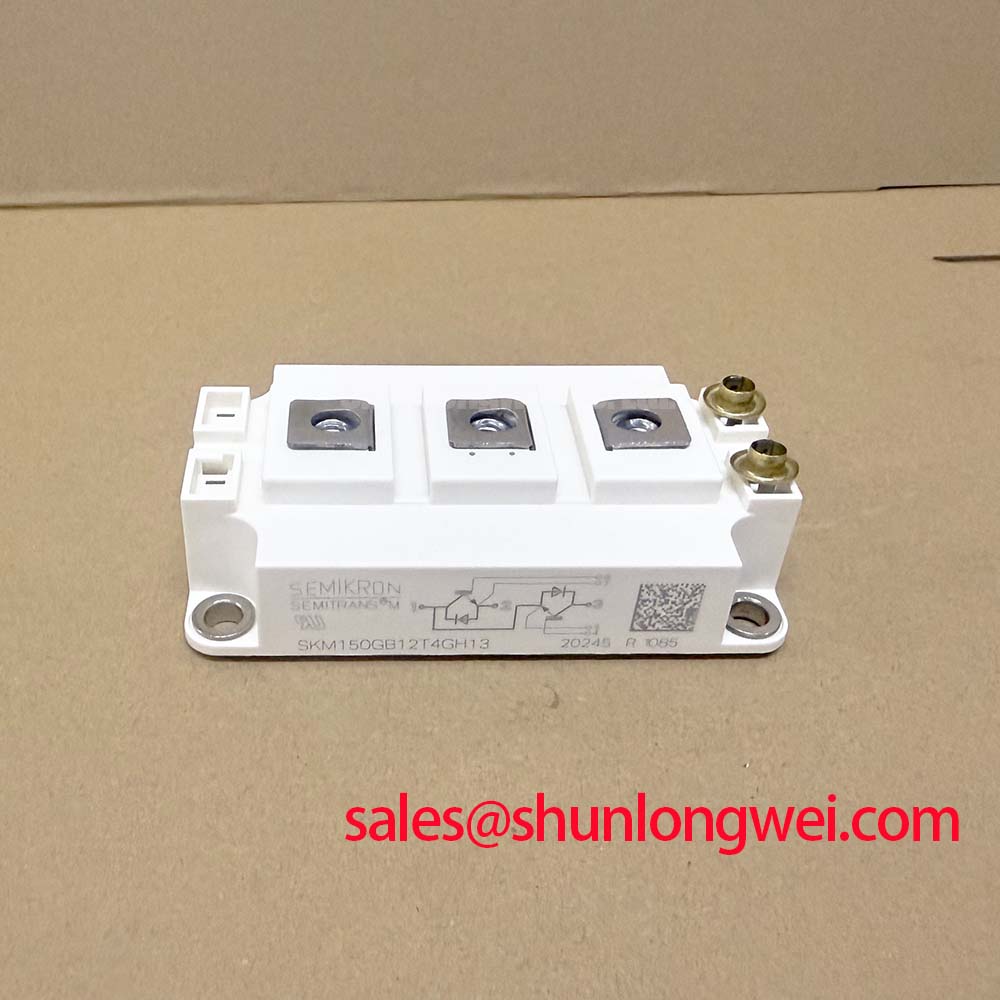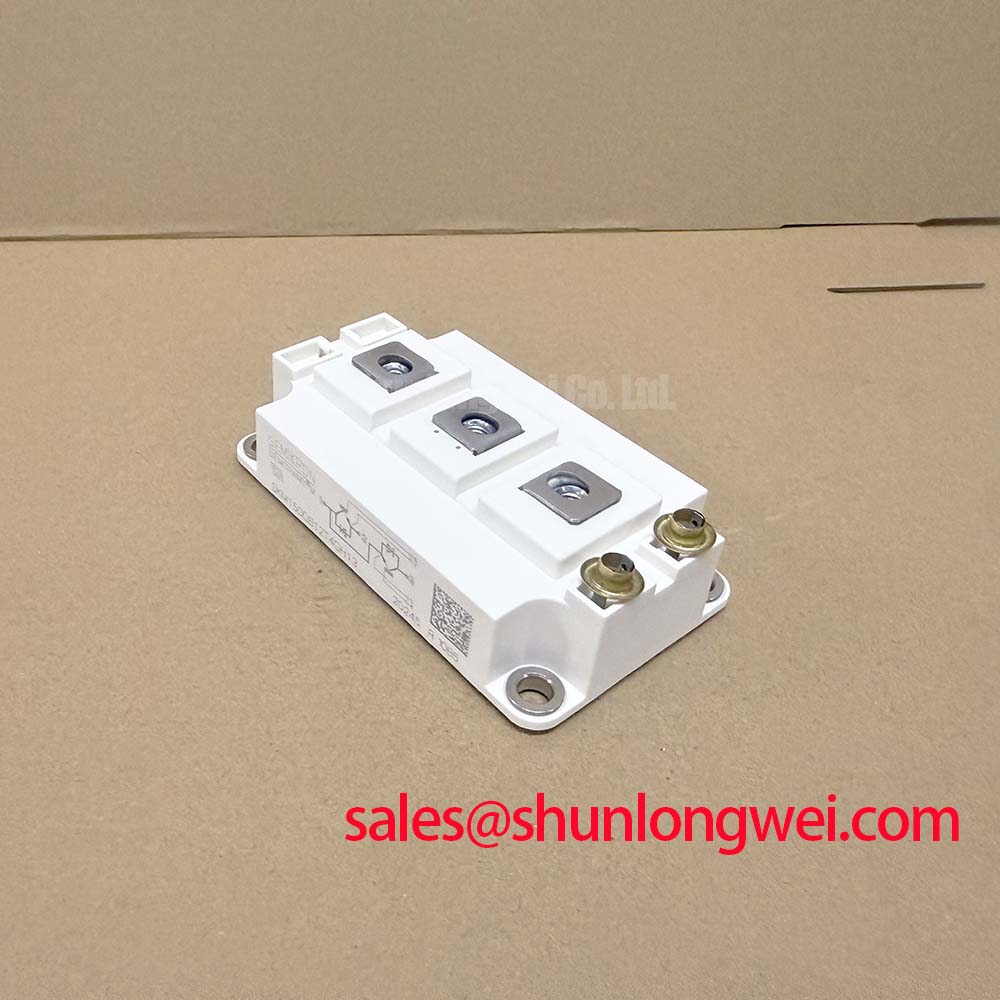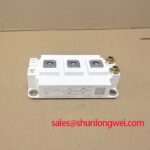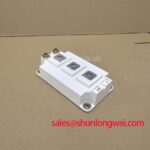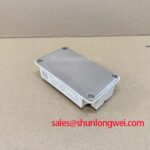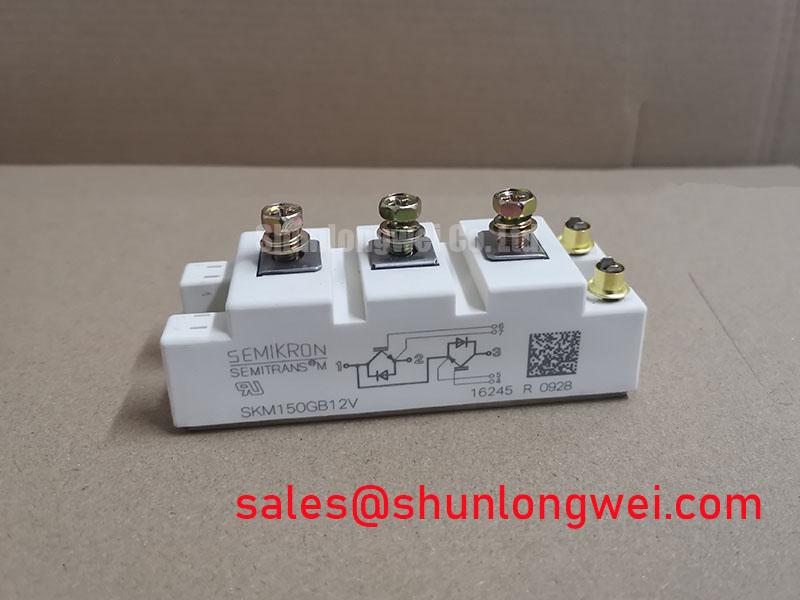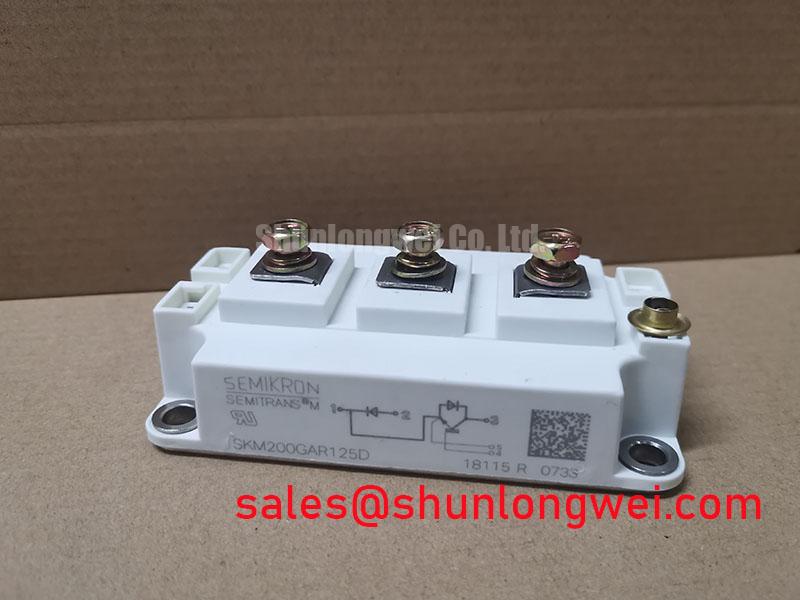Content last revised on November 15, 2025
SKM150GB12T4GH13: IGBT Module for High-Reliability Drives
Engineered for superior operational lifetime through advanced thermal management and pressure contact technology, the SKM150GB12T4GH13 from SEMIKRON sets a benchmark for durability in demanding power conversion systems. This SEMITRANS 2 module's design directly addresses the challenge of thermal fatigue, a critical failure mode in conventional soldered modules, by employing pressure contact technology. This approach ensures consistent thermal and electrical performance over an extended service life, safeguarding critical industrial assets.
Top Specs: 1200V | 150A (Tcase = 25°C) | VCE(sat) 1.7V (typ.)
Key Benefits: Enhanced power cycling capability. Superior thermal heat transfer.
This module is a half-bridge configuration featuring Trench Gate IGBT4 technology, which provides a well-balanced profile of low conduction and switching losses. For engineers evaluating long-term reliability, the key distinction of this H13 variant is its pressure contact system, which mechanically decouples the silicon from the baseplate, mitigating stress from thermal expansion mismatch.
Success Stories: Field-Proven Endurance in Power Systems
While specific customer deployments are proprietary, modules built on the SEMITRANS 2 platform with pressure contact technology are foundational components in sectors where uptime is economically vital. In large-scale renewable energy projects, such as multi-megawatt wind turbine converters and central solar inverters, these modules have demonstrated consistent performance over years of operation, enduring fluctuating load profiles and harsh environmental conditions. Similarly, in heavy industrial motor drives for mining or material processing, the robustness of the pressure contact design translates directly into reduced maintenance cycles and minimized production downtime, reinforcing the total cost of ownership benefits.
Anatomy of Endurance: A Closer Look at its Technical Design
The SKM150GB12T4GH13 distinguishes itself through a design philosophy centered on mechanical and thermal robustness. The core of this approach is the integration of SEMIKRON's pressure contact technology. Unlike traditional solder joints which can degrade and crack over thousands of thermal cycles, the pressure contact system maintains a reliable connection, ensuring consistent low thermal resistance throughout the module's life. This is mission-critical for applications like variable frequency drives that experience frequent changes in load. What is the primary benefit of its pressure-contact design? Enhanced long-term reliability by eliminating solder fatigue.
Further enhancing its thermal performance is the isolated copper baseplate. This component provides a highly efficient pathway for waste heat to be transferred from the IGBT and diode chips to the heatsink. Think of thermal resistance as the narrowness of a pipe carrying heat away; the low Rth(j-c) value of 0.16 K/W for the IGBT is analogous to a very wide pipe, allowing for maximum heat flow. This superior thermal design means the chips run cooler under load, which directly contributes to a longer operational lifetime and provides a greater margin of safety during transient overload conditions. For systems where thermal headroom is a primary design constraint, the SKM150GB12T4GH13 offers a distinct advantage over modules with less efficient thermal interfaces.
Strategic Value in Asset-Intensive Industries
In today's competitive industrial landscape, the focus is shifting from initial component cost to long-term asset performance and lifecycle value. The SEMIKRON SKM150GB12T4GH13 IGBT module is a prime example of a component designed for this strategic perspective. Its inherent reliability, stemming from the pressure contact technology and robust thermal design, aligns with the goals of Industry 4.0 and predictive maintenance. By reducing the probability of premature failure in critical power conversion stages, this module helps to maximize the availability of high-value assets like industrial machinery and renewable energy infrastructure. This contributes to a lower total cost of ownership (TCO) and supports sustainability goals by extending the service life of the end equipment. For more on the foundational role of these components, explore this in-depth analysis of IGBT modules.
Core Applications Demanding Unyielding Uptime
The specific combination of electrical characteristics and mechanical robustness makes the SKM150GB12T4GH13 an excellent candidate for a range of high-stakes power conversion applications. Its architecture is particularly well-suited for:
- Industrial Motor Drives: The module's high power cycling capability is essential for variable frequency drives (VFDs) and servo drives that control heavy machinery, where frequent start/stop and load change cycles are standard.
- Renewable Energy Inverters: In large solar inverters and wind turbine pitch/yaw systems, the long-term reliability ensures continuous energy production and minimizes costly on-site service interventions.
- Uninterruptible Power Supplies (UPS): The module's robust design provides the dependability needed for critical backup power systems in data centers, medical facilities, and industrial process control.
Best Fit Scenario: For industrial drives operating under severe thermal cycling conditions, this module's pressure contact design provides a measurably longer service life than conventional soldered alternatives.
Key Specifications for System Integration
The following parameters are critical for design and simulation. These values, extracted from the official datasheet, provide a high-level overview for initial system evaluation.
| Parameter | Value |
|---|---|
| Collector-Emitter Voltage (VCES) | 1200 V |
| Continuous Collector Current (IC) @ Tc = 80 °C | 100 A |
| Collector-Emitter Saturation Voltage (VCE(sat)) @ IC = 100 A, Tvj = 25 °C | 1.70 V (typ.) |
| Thermal Resistance, Junction to Case (Rth(j-c)) per IGBT | 0.16 K/W (max.) |
| Isolation Voltage (Visol) AC, 1 minute | 2500 V |
| Short Circuit Withstand Time (tsc) @ VGE ≤ 15 V, VCC = 600 V | 10 µs |
For complete specifications and operational curves, please refer to the official SKM150GB12T4GH13 datasheet.
Frequently Asked Questions
1. What does the "H13" suffix in SKM150GB12T4GH13 signify?
The "H13" denotes a specific internal configuration related to the pressure contact technology and the inclusion of an NTC temperature sensor. This variant is optimized for high-reliability applications where monitoring module temperature is crucial for system protection and diagnostics.
2. How does pressure contact technology improve reliability over soldering?
Pressure contact technology creates a separable interface between the semiconductor chip and the baseplate. This eliminates the large-area solder layer, which is a common point of failure due to fatigue cracking caused by the different thermal expansion rates of copper and silicon. By using a precisely engineered spring-loaded contact, the module can withstand a much higher number of temperature swings without degradation, directly increasing its operational lifetime. For an in-depth exploration of this topic, consider reading about IGBT failure analysis.
3. Can this module be paralleled for higher current applications?
Yes, SEMITRANS 2 modules are designed with characteristics that facilitate paralleling. The positive temperature coefficient of the VCE(sat) helps to ensure thermal stability and balanced current sharing among parallel modules. However, careful attention to symmetrical busbar layout and gate drive design is essential for successful implementation. For systems requiring significantly higher current, the SKM300GB128D offers a higher current rating within a similar voltage class.
4. What are the key considerations for mounting this module to a heatsink?
Achieving a low thermal resistance between the module's baseplate and the heatsink is vital. This requires a flat (typically specified within 50µm) and clean heatsink surface. A high-quality thermal interface material (TIM) should be applied evenly and thinly. Most importantly, the specified mounting torque for the screws must be strictly followed using a calibrated torque wrench to ensure even pressure distribution without warping the baseplate.
Comparative Data for Informed System Design
When evaluating IGBT modules, engineers often compare key parameters to align a component with specific design priorities. The SKM150GB12T4GH13 presents a profile focused on ruggedness and thermal stability. While some alternative modules might offer slightly lower switching losses (E_sw) or a lower forward voltage drop (VCE(sat)), this module's defining feature is its mechanical construction. Its pressure contact system provides a distinct advantage in applications with high thermal cycling stress, a factor not always apparent when comparing only electrical specifications. The decision between this module and a competitor often hinges on whether the application's primary driver is upfront efficiency or long-term operational resilience and minimized lifecycle cost. This data is provided to support your team's technical evaluation process.
Fostering Long-Term System Value
Selecting a power module like the SKM150GB12T4GH13 is an investment in the long-term viability and performance of the end system. By prioritizing design features that mitigate known failure mechanisms, such as thermal fatigue, this module provides the foundation for building more resilient and dependable power electronics. Integrating such components is a strategic step toward developing assets that not only meet performance specifications upon delivery but continue to operate reliably for years, ultimately enhancing brand reputation and customer satisfaction in a market that increasingly values durability.

